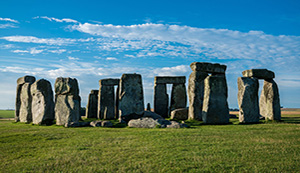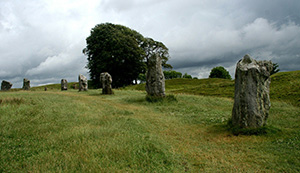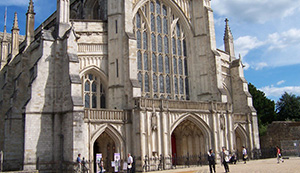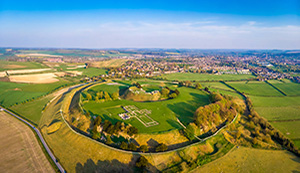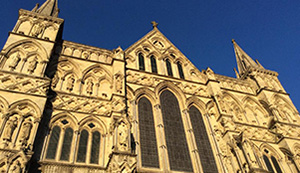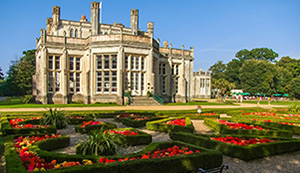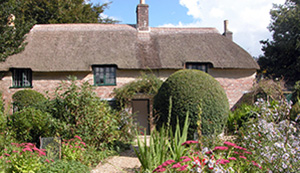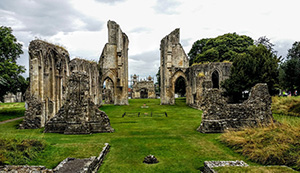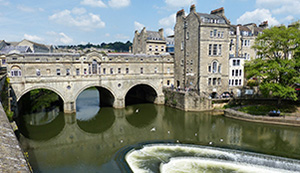Ten Places You Must Visit In Wessex
Few places combine all that is spectacular about England than the ancient area of Wessex. From the idyllic countryside, stunning coastline, and history dating back thousands of years, the counties of Hampshire, Wiltshire, Somerset, and Dorset provide something for every visitor.
Art and literature lovers will also be spoilt for choice in Wessex. Dorset provided the rural backdrop for many Thomas Hardy novels, including Far from the Madding Crowd and Tess of the d’Urbervilles. Jane Austin lived in Bath and ended her days in a cottage in Winchester. And around 300 artists found inspiration in the region during the period 1880 and 1914, leaving behind a remarkable legacy of paintings, including Bathing at Studland by Eustace Nash and Salisbury Cathedral from the Meadows by John Constable.
So whether you are looking to stay overnight, or for a longer period, our central Andover luxury serviced apartments give you a perfect base to explore this fantastic area, rich in history – and all from a base it feels like home.
The history of Wessex
The area of Wessex provides a rich treasure trove for lovers of history and archaeology. Neolithic peoples, who lived in the region between 4000-2200 BC, left behind the monumental Stonehenge as well as various other earthworks and stone monuments scattered across the region. By the late Bronze Age (2200-700 BC), the landscape was being divided into routeways and farms. Evidence has been found of small scale textile, metal and leatherworking. Bronze age inhabitants buried their dead in barrows, alongside goods that were precious to the deceased. Evidence for strong trade links with Continental Europe abounds – amber from the Baltics, jewellery from what is now modern-day Germany, gold from Brittany, and daggers and beads from Mycenaean Greece.
The Iron Age (700BC – 43AD) saw the building of the Mighty Hill Forts at Old Sarum and Danebury.
Country villas and the towns of Dorchester and Winchester were built by the Romans, who arrived in Britain in 43AD.
Romano-British people also built a road that connected Dorchester, Winchester, and Silchester to London.
The Romans left Britain in the fifth century, and the country entered into the period known as the Dark Ages. The undefended Island was quickly engulfed by Angles, Saxons, and Picts. The defending of the Celtic Britons from these invaders is captured in the Arthurian romances. One of the most famous battles of this age was the Battle of Badon, where King Arthur led the British forces to victory. The location of Badon is unknown; however, two sites in Wessex, Badbury Rings at the Kingston Lacy House in Dorset; and Bowden Hill in Wiltshire have been suggested as the spot where the battle was fought.
By the end of the sixth century, the Anglo Saxons, as they became known, had established a firm society and culture, and had predominantly converted to Christianity. However, the Viking raids, which began in 793 AD, rocked the stability of the Island to its core. But in times of trouble, great heroes emerge, and for Wessex, this hero was King Alfred the Great, the man who united England. After several years fighting off Viking invasions, Alfred won the Battle of Edington. An agreement was made with the Vikings, and they took over territory in the North, known as the Danelaw.
King Alfred reformed the army, created a navy and played a significant part in the development of the English language. He also created a legal code which provided the basis of the modern common law system.
In 1066, the Normans conquered the Anglo Saxons at the Battle of Hastings and changed the landscape and culture of England forever. Although the term ‘Wessex’ became less widely used, the counties of Wiltshire, Hampshire, Somerset, and Dorset remained a vibrant and important part of English politics, history, and art.
Today the area mixes quiet, timeless rural idyll with lively, dramatic towns and cities. Although there are hundreds of fascinating sites to see, we have narrowed down the ten that you simply cannot miss.
Stonehenge
Viewing Stonehenge moves visitors to silent wonder and contemplation. It is one of the worlds most famous Neolithic monuments and is located in Wiltshire, two miles (three kilometres) west of the town of Amesbury.
Stonehenge is believed to have been built between 3000 to 2000 BC, with the circular earth bank and ditch dating from 3100 BC. It was not built all at once, instead it was constructed in several stages.
What makes Stonehenge fascinating is that we know so little about how and why it was built. Neolithic peoples left no written records.

Two types of stones were used to create Stonehenge, larger sarsen stones and smaller bluestones. The average weight of a sarsen stone is 25 tonnes (the largest being 30 tonnes) and they all had to be moved from the Marlborough Downs, 20 miles (32km) away. These were somehow moved without the aid of the wheel, as this technology had yet to be invented.
Reasons for its construction abound; however, recent excavations have unearthed human bones dating back thousands of years. This suggests that the monument served as an ancient burial ground, and perhaps a temple of the dead. The fact that Stonehenge aligns to the midsummer sunrise and the midwinter sunset has led scholars to suspect the site may also have been an ancient observatory and/or calendar.
To plan your visit to Stonehenge, go to the English Heritage website.
The New Forest
Spreading across southwest Hampshire and southeast Wiltshire, the New Forest covers an area of 566 square kilometres. It is an unspoilt paradise of woodland, heathland, and river valleys. Ponies, cattle, and deer roam freely through the natural environment, making it a perfect place for walking, biking, and horseback riding.
Picturesque villages dotted amongst the forest provide cosy pubs, traditional tearooms, and fascinating museums.

There are weekly markets in Hythe, Lymington, and New Milton, plus Hampshire farmers’ markets in Ringwood. The New Forest Show takes place every year over three days in July with local food producers and other traders showcasing their wares as well as main arena attractions such as show jumping and the people versus tractor tug of war.
Go here to find out more about visiting the New Forest.
Avebury
One of the best known Neolithic sites in Britain, Avebury is a henge monument containing three stone circles which surround the village of Avebury in Wiltshire. Built between 2850 BC and 2200 BC, the complex is made up of a large henge (a bank and a ditch), an outer stone circle, and two smaller circles.
Seeing the stones is free and there are a museum and gardens to visit as well. And the ancient sites of Silbury Hill and the West Kennett Longbarrow are close by.
Unlike Stonehenge, you can walk freely amongst the stones, imagining what it was like to live 4,500 years ago.

Avebury is a sacred site to modern Pagan religions such as Druidry, Wicca, and Heathenry and these faiths view the monument as a living temple. Pagan rites are performed in public at the site and all are welcome to observe.
Winchester
Few cities can match Winchester in terms of history, culture, and attractions. The ancient former capital city of England, it boasts the country’s largest farmers market, a stunning 11th century cathedral, and is the birthplace of cricket.
For fans of King Arthur lore, the 13th century Great Hall is a must see. It contains King Arthur’s Round Table, thought to have been crafted around 1290. You can also admire the Queen Eleanor’s Garden which is filled with 13th century plants and scents.
Forever connected with the mighty Alfred the Great, who made it his capital, the city contains a striking statue of the great King.
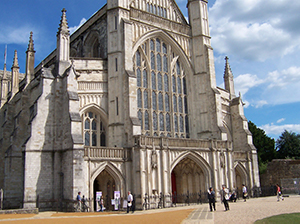
If you are in the mood for some exercise, you can walk along St Swithun’s Way, a 34 mile path linking Winchester and Farnham. On the way, you can pop into the village of Chawton and visit Jane Austen’s House Museum.
Find out more about visiting Winchester here.
Old Sarum
The site of Salisbury’s earliest settlement, Old Sarum is home to over 5,000 years of history. There is evidence that Neolithic farmers occupied the site, which is close to Stone Henge and Avebury. Located 2 miles from modern Salisbury, the magnificent hill fort of Old Sarum allows visitors to walk in the footsteps of Romans, Anglo Saxons, and Medieval peoples.
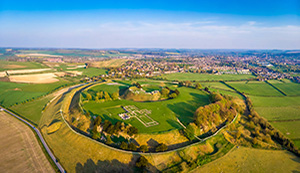
To find out more about visiting Old Sarum, visit the English Heritage website.
Salisbury Cathedral
Salisbury Cathedral will leave you in awe. Regarded as one of the best examples of Early English Architecture, it was built between 1220 and 1258.
The Cathedral is the seat of the Bishop of Salisbury, home to one of the worlds oldest working clocks, and holds one of the four original copies of the Magna Carta.
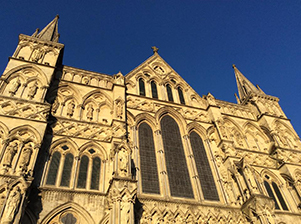
The Cathedral Close covers 80 acres, making it the largest in Britain. Located in the Close is Sarum College, which offers regular courses and postgraduate study, Salisbury Museum, and Arundells, the home of former Prime Minister, Sir Edward Heath.
To find out more about visiting Salisbury Cathedral, click here.
Highcliffe Castle
Described as “the most important remaining example of the Romantic and Picturesque style of architecture” Highcliffe Castle, located just over three miles from Christchurch, Dorset, provides fun and entertainment for all ages. Built mainly between 1831 and 1836 by Lord Stuart de Rothesay, it was a family home up until the 1950s.
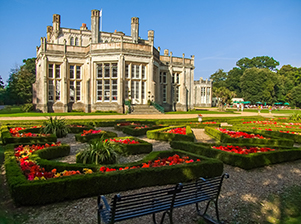
As well as visiting the house, there are many activities for children and beautiful gardens to explore.
Find out more about visiting Highcliffe Castle here.
The Thomas Hardy Literary Trail
Fans of Victorian literature cannot miss exploring Thomas Hardy’s Dorset. Hardy took inspiration for most of his novels and poems from the beautiful landscapes, towns, and villages of the county. You can spend a day or two visiting Higher Bockhampton, where Hardy was born, and Shaftesbury, the hilltop town referred to as “Shaston” in his novels, and of course Dorchester, Hardy’s Casterbridge.
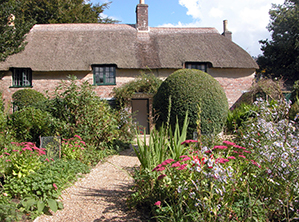
Don’t miss Thomas Hardy’s Cottage, the great writer’s birthplace and where he lived for 34 years. Here he wrote two of his most beloved novels, Under the Greenwood Tree (1872) and Far From the Madding Crowd (1874).
Glastonbury Abbey
Founded in the 7th century, Glastonbury Abbey is one of England’s most important ecclesiastical sites. Located in Somerset, by the 14th century, the Abbey was one of the wealthiest monasteries in England. This was no doubt helped by the ‘discovery’ of King Arthur’s and his queen, Guinevere’s tomb in 1191.
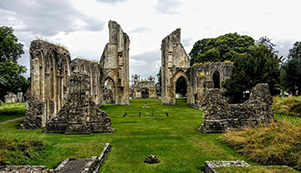
Don’t miss the Abbot’s Kitchen, one of the best-preserved medieval kitchens in Europe.
Plan your visit to Glastonbury Abbey by visiting the official website.
Bath
Bath will reside in your memory long after you leave. It has been a wellbeing destination since Roman times. Spend your days taking in the glory of the Roman Baths, the stunning Georgian architecture, the glorious Bath Abbey, and the Jane Austin Centre.

Garden lovers will find Bath full of delights. Stroll through the Prior Park Landscape Garden, the Royal Victoria Park, and the gentle Sydney Gardens. And if you are then in need of some refreshment, take traditional afternoon tea at the famous Pump Room.
Plan your visit to Bath by visiting its official tourism website.

